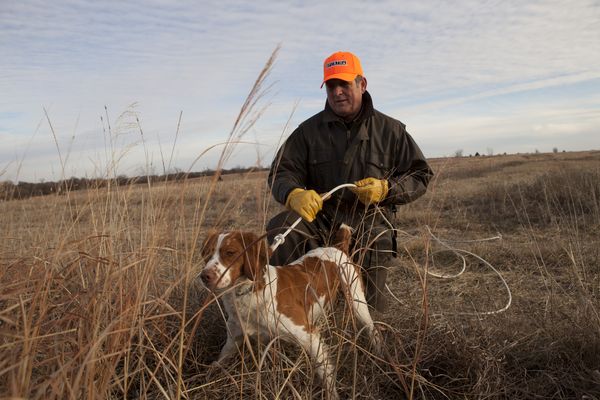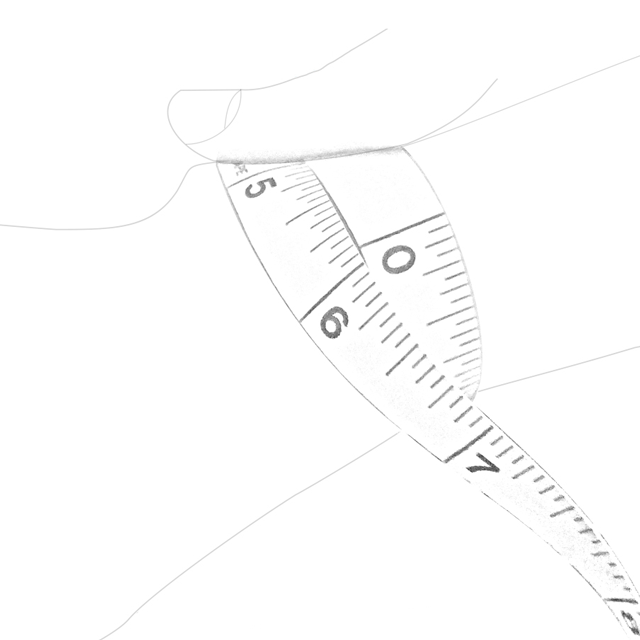Trainin’ Dogs with Rick Smith: Cross-Training
In the entire world, few people get the full benefit of all the potential their dog has. Mostly, that’s because they have their dog for a specific purpose and that’s all the performance they require of their dog. Our main focus is upland bird hunting, but that doesn’t mean our dogs can’t do more. Of all the questions we are asked, one common thread seems to weave its way through the conversations: cross-training upland bird dogs for other types of hunting and other activities.
Dogs hunted for survival for thousands of years before we decided to breed them for specific purposes, and back then, they ate whatever they could catch. Fur or feather, it didn’t matter. And even today, if a bird dog was turned loose to survive without us, it would hunt and eat much the same as its ancient ancestors did. Hunger takes over, instinct kicks in, and a meal is a meal whether it’s a rabbit, a mouse, or a deer.
With more than one dog, the pack mentality takes over to hunt and bring down game. In cross-training, the pack attitude is also present, and in order to control how and what the dog hunts, we have to be a clear and obvious leader. And, as we’ve said before, the more time you spend with your dog, the better the relationship will be. In cross-training, you’ve got to show your dog what you expect, and you’ll use the same skill set you’d use when upland bird hunting. It still boils down to the basics the dog was taught earlier: go with me, come to me, and stand still.
One question we hear a lot is, “Can I duck hunt with my [insert the breed of choice]?” More than likely, the answer is yes, but don’t expect it to break ice like a Chesapeake or a Labrador. And take the dog’s coat into consideration as well. A short-coated breed such as a viszla, Weimaraner, or German shorthair is not going to handle frigid water temperatures as well as a breed with a heavy outer coast and undercoat to insulate. Breeds built for the speed and agility needed for upland hunts don’t have the body mass or insulating fat layer that slower and stockier retriever breeds do, which comes into play in tough conditions.
Before you write letters about breed discrimination, we’d like to add that the heavier-coated retriever breeds can’t handle the heat on upland hunts like the leaner, fine-coated pointing dogs, and they also can’t run as fast or far. It works both ways, and both sides have to adapt to what is within the individual dog’s capabilities. That may mean hunting in weather and conditions the dog can handle, or using a neoprene vest to help retain body heat in cold water.
Ice is another big concern for all dogs. A dog that breaks through ice and can’t get back out again is in serious danger, and even more so in moving water. Always know your hunting area and conditions and don’t take risks if there’s any uncertainty about safety.
The big question is: Does the dog like to swim? Most dogs do, but there are some that just don’t enjoy it, Plus, many upland dogs haven’t had much opportunity to do any swimming. A great way to introduce water and swimming is to find a pond or lake on a hot day, work your dog, and then encourage the dog to go swimming to cool down.
Jumpshooting – walking into a pond area that holds ducks and shooting ducks once they’ve come up off the water – is a great way to make the transition from upland birds to ducks. From there, it’s not at all difficult to work from a duck blind. If your dog is already steady on upland birds and knows the “whoa” command, just add the retrieving part and you’re set to go. While you may not want to go through all the drills to train your dog to handle to a blind retrieve (a bird the dog didn’t see fall), you can encourage your dog to go in that direction and hunt the area. All you need is a handful of small rocks in your pocket. Toss a rock in the direction the bird went down and send your dog. Ripples on the water as well as the splash should encourage your dog to swim in that direction, and from there, its nose takes over. A few rocks in succession may be needed to guide the dog to the area of the fall.
We’re assuming a dog trying this has been through a trained retrieve (or force-fetch) program as well as the regular training for upland. This can make a big difference, since often a dog that hasn’t had formal retrieving training will get to the edge of the water, put down a bird, and shake the water off its coat. An untrained dog may not pick the bird back up again to bring to you. Plus, if it’s a cripple, a bird has just been lost.
How about tracking? It’s another fun and useful skill that’s easy to teach. You can use a dead bird, rabbit, or whatever you want the dog to track. If you keep it in the freezer, you can thaw it as needed. Let the dog sniff and play with it for a minute. Then attach a rope to it and drag it a short distance. If you can, walk to the side so that the object to be tracked isn’t following your footsteps, and wear rubber boots to help contain your scent. Start with short tracks, gradually increasing distance and difficulty as your dog catches on to the idea. When the dog finds the goal at the end of the track, be sure to let the dog know it has done well. In the early stages, encourage the dog to pick up the object and parade around with it. This gives the dog incentive to track and retrieve because there’s a reward at the end.
How about deer tracking? This can be a big help during deer season if a wounded deer can’t be recovered by conventional means. First of all, it’s important to know the laws in your state. In some states, it’s illegal to track deer with a dog; if it is legal, the dog may have to be on a leash, which in our opinion is the best way to track. Second, it’s better to teach the dog to track blood scent than just deer scent. The last thing we want to encourage in our bird dogs is to chase deer, so using blood comes in handy. The type of blood used isn’t important. If you can collect deer blood from a fresh kill, save it in something like a squeeze bottle. Otherwise, a slaughterhouse can often be a source of fresh blood. It can be frozen for later use and then thawed, but fresh is best.
Use the bottle to lay a short track, using small drops spaced closely at first and gradually increasing the distance between drops over several different sessions. Gradually increase the difficulty by placing blood in taller cover, on the side of trees or brush, and in sandy soil. Add distance as the dog gains confidence.
To start the dog on the track, use a leash or a harness. Let the dog smell the area and then let it follow the track. It’s good to leave some sort of treat at the end to motivate the dog to get there. A small piece of hot dog works well.
You can even have some fun with tracking people. Use a sweatshirt or some article of clothing that has been worn and not laundered. Let the dog scent the clothing while the person who has worn the clothes leaves a track and then hides. Lead your dog along the track until the person is found, then offer a treat for success. Dogs catch on pretty quickly, and you can add the person’s name once the dog understands the skill. Then when you say, “Find Jane,” your dog learns to go to that person. It can be a fun parlor trick, and it can also be invaluable should you decide to learn search and rescue.
There is so much untapped potential in all dogs. They are capable of such great and amazing things. All they need is for their leader to teach and encourage them and spend the time to shape their talents. The more we do with our dogs, the stronger the bond between dog and human. That’s one more step toward making our dogs the best they can be.
Originally appeared in The Pointing Dog Journal. Written by Rick Smith & Sharon Potter
The post Trainin’ Dogs with Rick Smith: Cross-Training appeared first on Garmin Blog.
Sample Block Quote
Praesent vestibulum congue tellus at fringilla. Curabitur vitae semper sem, eu convallis est. Cras felis nunc commodo loremous convallis vitae interdum non nisl. Maecenas ac est sit amet augue pharetra convallis nec danos.
Sample Paragraph Text
Praesent vestibulum congue tellus at fringilla. Curabitur vitae semper sem, eu convallis est. Cras felis nunc commodo eu convallis vitae interdum non nisl. Maecenas ac est sit amet augue pharetra convallis nec danos dui.
Cras suscipit quam et turpis eleifend vitae malesuada magna congue. Damus id ullamcorper neque. Sed vitae mi a mi pretium aliquet ac sed elitos. Pellentesque nulla eros accumsan quis justo at tincidunt lobortis denimes loremous. Suspendisse vestibulum lectus in lectus volutpat, ut dapibus purus pulvinar. Vestibulum sit amet auctor ipsum.


